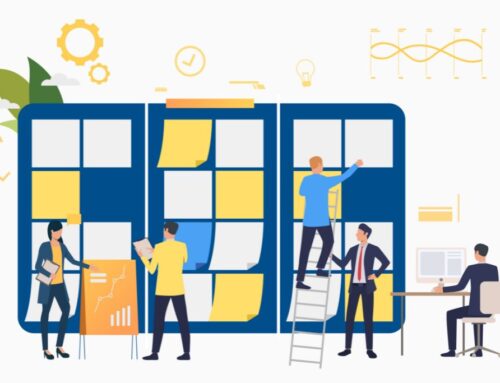Fostering a culture of growth to overcome uncertainties and ambiguity among the teams that promotes collaboration, enhances effectiveness and efficiency, and makes organizations adaptive to the changing scenarios (be it technical, functional, or external) is essential to evolve, scale, and innovate. It’s an agile mindset that truly brings such a transformation and produces promising outcomes for organizations to scale and thrive.
Agile transformation is challenging because it’s more than implementing a few methodologies. It requires mindset shift which not only makes how the tasks are done but also the thought processes as to how to get them done.

- According to a Harvard Business Review that included 1300 IT and business leaders, there was a 60% increase in company revenues who adopted agile ways of working.
- Holistic implementation of agile methodologies has improved customer satisfaction, employee engagement, and overall efficiency by more than 40% according to Mckinsey & company review
- Jeff Sutherland, co-founder of Scrum framework, estimates that 47% of companies fail to integrate agile ways of working into their organization.
Five factors that resist organizations from agile mindset
Unclear of the “why?”
There are organizations where they focus less on evolving technologies due to which there is a gap in operational procedures. Though many niche industries adapt to these evolving practices, there’s a line of differentiation that made them fall behind and converse at a critical state in competing with evolving market changes.
Such lack of knowledge and iterative guiding principles became barriers to understanding why they need agile transformation. Indeed, this has led to unpredictable outcomes, ineffective collaboration, and unrealistic goals that often-made people resistant to agile ways of working.
Dealing with “old-school” mindsets
Mind is a terrible master but a wonderful slave, if we set the direction right. In many cases, from what I perceived, people need to deal with their subconsciousness to drive and embrace change. The traditional approaches have brought a set of values that were part of daily lives. To change those values, an entire transformation is at stake. They have become accustomed to the old-school models of working and this makes it so challenging for organizations to convince and change their mindset.
The only way to overcome these cultural barriers is by resetting the culture in a steady and consistent way so that it falls in line with agile principles and practices.
Changing ways of working with “Conservers”
As said before, the natural bias of the human brain doesn’t allow people to change. This is one of the major barriers and challenges that organizations see frequently. They need to work relentlessly to make these “Conservers” as Mike Cohn, one of the founders of Scrum names them, follow the upgraded models. According to my observation, they don’t challenge themselves to match the competitive landscape.
In these cases, the organizations must plan a step-by-step approach to make Conservers understand how agile offers greater flexibility. And it’s a leadership influence that’s more powerful for a successful transformation than just pushing people into fire!
Leading the tribe
As a leader of the organization, it’s your responsibility to ensure transformation happens, keeping in mind that this adds value to meeting business goals quickly and improving overall efficiency. A promising tone to achieve flexibility drives every team member to hold the crux of agile. Your way of training and guiding the key stakeholders, c-suite, servant-leaders, and teams make everyone adaptable to desired change and move your organization to operate at scale.
Too many regulations!
The BFSI sector has a set of regulations to follow and any change in operational models must be strict to these principles; healthcare, on the other end, primarily maintains the health records of patients and this health data is sensitive. Healthcare industries ensure that this health data has to be protected even though technological changes evolve.
Considering other industries such as food and drug, oil and gas, telecommunications, etc., have sophisticated regulations. For these industries, transformation can be strenuous. It’s because these industries rely heavily on consumer and market behaviors. In these scenarios, agile adoption addresses consumer pain points in micro ways.
Though there’s almost less than 44% adoption in these industries towards agile mindset, your organization can work incorporating agile principles across various departments or functional units on top of whatever is implemented till now!
To summarize, in a dynamic technology and workforce landscape, approaching business agility in a disciplined way with the growth mindset will help your organization to adapt, transform and achieve scalability at speed.


